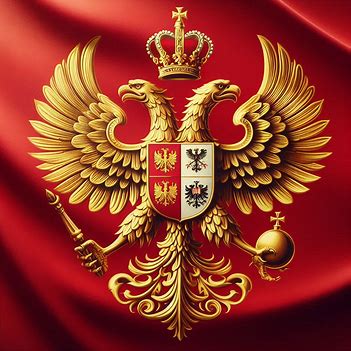



Holy Roman Empire Flag
The Holy Roman Empire flag or use of symbols and flags evolved over time, beginning largely under Charlemagne (Charles the Great), who is often considered the first Holy Roman Emperor, though the formal “Holy Roman Empire” name came later. In 800 AD, Pope Leo III crowned Charlemagne as Emperor, establishing the Carolingian Empire, which was seen as a revival of the Western Roman Empire. This moment laid the foundation for what later became the Holy Roman Empire.
The empire itself formally began in 962 AD, when Otto I (Otto the Great), the king of East Francia, was crowned by Pope John XII as the Holy Roman Emperor. Otto is often credited with consolidating the idea of the Holy Roman Empire as a separate political entity, aiming to unify and lead a Christian Europe under imperial rule.
As for the iconic double-headed eagle flag, it first appeared in the 13th century, symbolizing the emperor’s claim to both spiritual and temporal authority, as well as his role as ruler over both eastern and western parts of the empire. Frederick II (reigned 1220–1250) is credited with popularizing the use of the double-headed eagle as a symbol of the empire. The double-headed eagle emblem was further solidified under Sigismund of Luxembourg in the 15th century, who officially adopted it for the empire.
The black and gold colours of the flag, representing strength and wealth, also became standardized in this era.
10 Facts about this holy flag:
The Double-Headed Eagle: The double-headed eagle on Holy Roman Empire Flags symbolized the empire’s reach over both East and West Europe. Each head faced a different direction, essentially saying, “We’ve got both sides covered!”
Not Always Holy or Roman: Despite the grand name, the Holy Roman Empire wasn’t always united or entirely Roman. Holy Roman Empire Flags were designed to convey stability and unity, even if reality was often a bit more chaotic.
Frederick II’s Influence: Although earlier emperors used eagles, Frederick II in the 1200s popularized the double-headed eagle as a key emblem on Holy Roman Empire Flags, adding a mythical and imperial flair to its symbolism.
The Black and Gold Theme: By the 14th century, black and gold became the official colours of Holy Roman Empire Flags. These shades represented strength and wealth and lent an air of authority to the empire’s banners.
Sigismund’s Signature Choice: The double-headed eagle truly became the official emblem on Holy Roman Empire Flags during the reign of Sigismund of Luxembourg in the 15th century. His decision helped define the empire’s image, stamping the eagle on coins, seals, and banners.
The Crowns on Each Head: The eagle on Holy Roman Empire Flags often wore a gold crown on each head, symbolizing the emperor’s supreme authority over both temporal and divine realms.
A Flag of Many Variations: Because the empire spanned many territories, Holy Roman Empire Flags saw countless adaptations, with regions adding symbols and colours to suit local pride and influence, making the flag an ever-evolving symbol across Central Europe.
Influence on the Third Rome: After the fall of Constantinople, the Russian Empire adopted a double-headed eagle similar to that on Holy Roman Empire Flags. Russia saw itself as the “Third Rome” and used the eagle as a symbol of Christian unity.
Different from Ancient Rome: Although Holy Roman Empire Flags were meant to invoke the glory of the ancient Roman Empire, they featured medieval European symbols rather than ancient Roman ones, adding a unique twist to the Roman legacy.
The Legacy of the Flag: When the Holy Roman Empire dissolved in 1806, the double-headed eagle from Holy Roman Empire Flags continued as a powerful image in European heraldry, inspiring flags and coats of arms across Europe, from Austria to the federal eagle of modern Germany.
To read a vast collection of mysterious historical content, You might consider visiting History Archives. If you love our content, don’t forget to subscribe to us by the form below. Feel free to share your thoughts.



